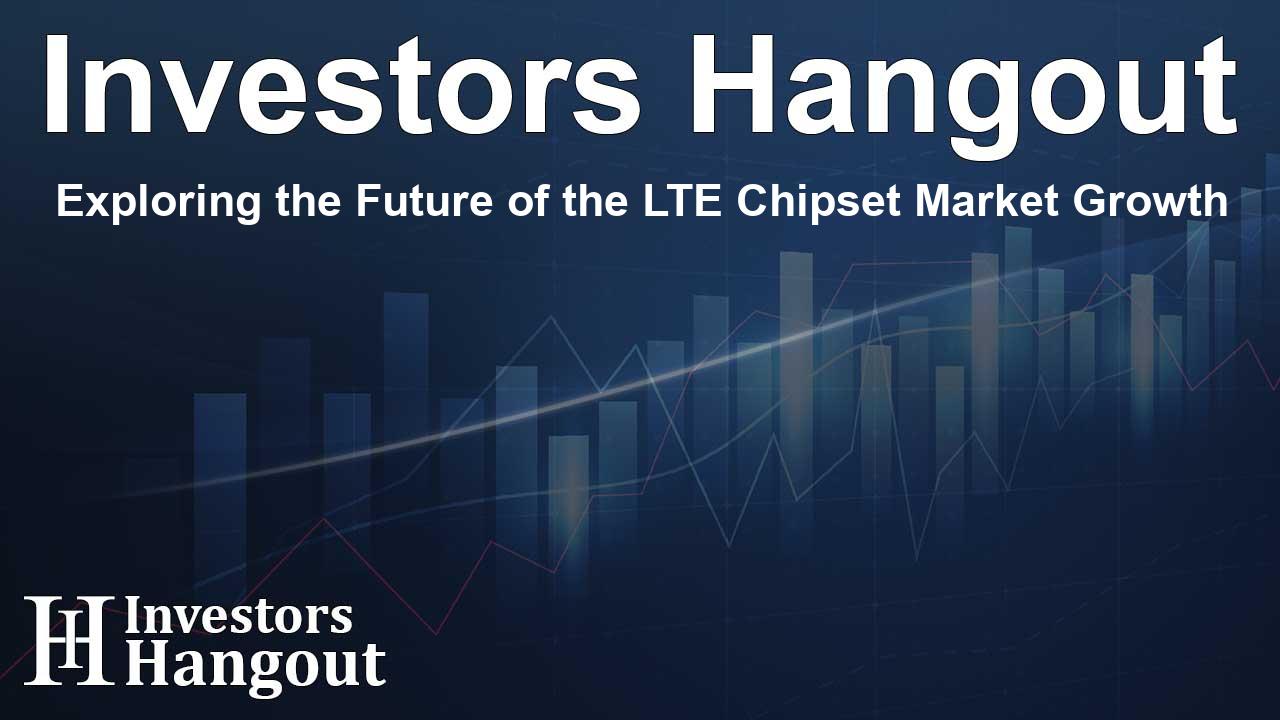Exploring the Future of the LTE Chipset Market Growth

Understanding the Expanding LTE Chipset Market
The LTE chipset market is rapidly evolving, with projections suggesting that its value will exceed USD 29.65 billion in the coming years. The significant growth is primarily fueled by the surging demand for mobile data and the ongoing integration of 5G technologies. This growth trajectory highlights the importance of LTE chipsets in enabling various applications across industries.
Key Drivers of Market Growth
Increased Adoption of IoT and M2M Communication
One of the major catalysts for the expansion of the LTE chipset market is the increasing reliance on Internet of Things (IoT) and Machine-to-Machine (M2M) communication. Various sectors, including smart manufacturing, logistics, and agriculture, are increasingly implementing connected devices that require effective and reliable communication solutions. LTE chipsets, such as LTE-M and NB-IoT, are meeting these needs by providing exceptional uplink bandwidth, low latency, and enhanced energy efficiency. These features are crucial for sectors aiming to automate processes, track assets, and gather telemetry data.
The Move Towards Digital Transformation
Industry leaders are embracing digital transformation, leveraging LTE technology to implement scalable and secure IoT infrastructures. The use of LTE chipsets not only promotes efficiency but also caters to the growing requirements of real-time data transmission in various applications. By 2025, it's anticipated that LTE technology will facilitate the operation of smart meters in a vast majority of newly deployed systems.
Market Dynamics and Competitive Landscape
Top Players in the LTE Chipset Arena
The competitive landscape of the LTE chipset market comprises several prominent players, each contributing to advancements in technology. Major companies in this field include Qualcomm Technologies Inc., MediaTek Inc., Intel Corporation, Samsung Electronics Co. Ltd., and Huawei Technologies Co. Ltd. These companies are innovating continually to enhance product offerings and meet the evolving demands of the market.
Segment Insights
According to segment analysis, the LTE-FDD segment dominated the market in 2024, holding a substantial share driven by its extensive global deployment capabilities. LTE-Advanced is also gaining traction, projected to grow at a remarkable CAGR as the demand for high-speed data continues to soar. Different components within the market, including hardware and software solutions, play essential roles in addressing the diverse needs of end users ranging from smartphones to mobile hotspots.
Regional Trends and Projections
Market Leaders by Region
In 2024, Asia Pacific was the leading region for LTE chipset market share. This growth can be attributed to rapid urbanization and advances in digital infrastructure in countries such as China and India. The substantial investment from governments to support these initiatives has bolstered the widespread use of smartphones and IoT devices.
North America’s Rise
North America is expected to exhibit accelerated growth, particularly driven by the U.S. market. The region benefits from high smartphone penetration, established LTE infrastructure, and the presence of key industry players like Qualcomm. Consequently, North America is projected to have the highest growth rate in the LTE chipset market over the next several years.
Recent Developments in the Industry
The LTE chipset market is witnessing notable advancements, with significant mergers and product launches altering the competitive landscape. For instance, Qualcomm recently acquired Sequans' 4G IoT technology to strengthen its capabilities in the low-power IoT sector. Similarly, Samsung introduced its Galaxy A16 devices, showcasing the latest LTE capabilities while emphasizing innovation in design and performance.
Frequently Asked Questions
What factors are driving the growth of the LTE chipset market?
The rising demand for IoT and M2M communication, alongside the integration of 5G technologies, are key drivers fueling market growth.
Which companies are leading the LTE chipset market?
Prominent players include Qualcomm Technologies Inc., MediaTek Inc., Intel Corporation, and Samsung Electronics Co. Ltd.
What are the expected trends in the LTE chipset market?
An increase in high-speed data demand and the advent of more advanced applications, including AR and 4K streaming, will shape market trends.
Which regions are the largest contributors to the LTE chipset market?
Asia Pacific currently leads in market share, with North America expected to grow at the fastest pace in the upcoming years.
How is the market segmented by product?
The market is segmented by product technology such as LTE-Advanced, LTE-TD, and LTE-FDD, along with components like hardware and services.
About The Author
Contact Kelly Martin privately here. Or send an email with ATTN: Kelly Martin as the subject to contact@investorshangout.com.
About Investors Hangout
Investors Hangout is a leading online stock forum for financial discussion and learning, offering a wide range of free tools and resources. It draws in traders of all levels, who exchange market knowledge, investigate trading tactics, and keep an eye on industry developments in real time. Featuring financial articles, stock message boards, quotes, charts, company profiles, and live news updates. Through cooperative learning and a wealth of informational resources, it helps users from novices creating their first portfolios to experts honing their techniques. Join Investors Hangout today: https://investorshangout.com/
The content of this article is based on factual, publicly available information and does not represent legal, financial, or investment advice. Investors Hangout does not offer financial advice, and the author is not a licensed financial advisor. Consult a qualified advisor before making any financial or investment decisions based on this article. This article should not be considered advice to purchase, sell, or hold any securities or other investments. If any of the material provided here is inaccurate, please contact us for corrections.
